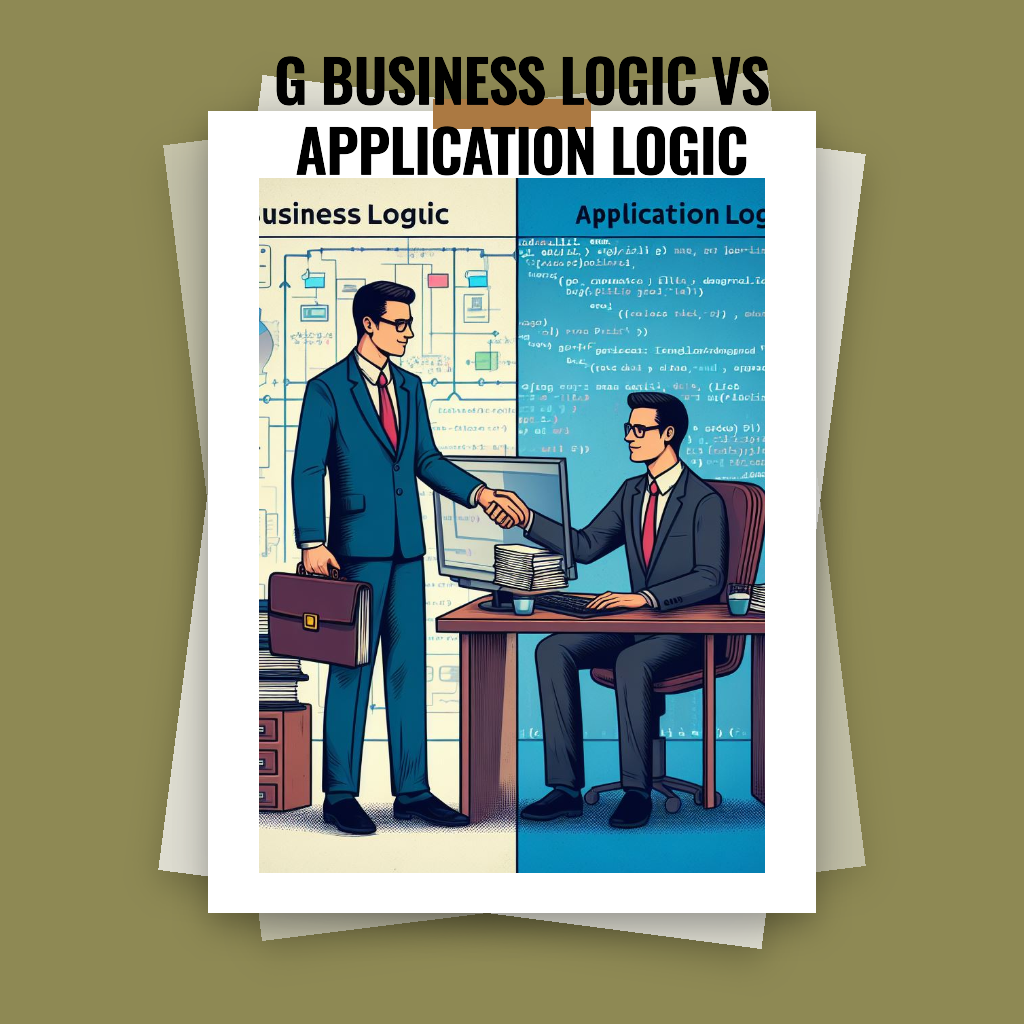Understanding Business Logic
Business logic forms the foundational rules and processes governing how a business operates. It encapsulates the core principles, policies, and workflows that drive decision-making and operations within an organization. From managing transactions to enforcing rules and regulations, business logic shapes the overall structure and behavior of a business.
Exploring Application Logic
On the other hand, application logic refers to the specific set of rules and algorithms embedded within a software application to achieve its intended functionality. It dictates how data is processed, validated, and manipulated within the application to produce desired outcomes. While business logic sets the broader context for operations, application logic focuses on the technical implementation within a software system.
Key Differences
Scope and Context
- Business Logic: Concerned with overarching business rules and processes.
- Application Logic: Focuses on the technical implementation within a software application.
Flexibility and Adaptability
- Business Logic: Often subject to change based on evolving business requirements.
- Application Logic: More static and rigid, reflecting the specific functionalities of the application.
Stakeholder Involvement
- Business Logic: Involves stakeholders across the organization, including management, operations, and legal teams.
- Application Logic: Primarily developed and maintained by software developers and engineers.

Interplay between Business and Application Logic
While distinct, business logic and application logic are intricately intertwined within software systems. Application logic serves as the vehicle for implementing and executing business rules and processes within the digital realm. It translates the abstract concepts of business logic into concrete actions and operations within the software application.
Importance in Software Development
Business-Centric Approach
- Business Logic: Guides software development efforts to align with overarching business goals and objectives.
- Application Logic: Translates business requirements into functional specifications and technical implementations.
Seamless Integration
- Business Logic: Ensures that software applications effectively support and enable core business processes and workflows.
- Application Logic: Implements the necessary functionalities and features to execute business logic efficiently.
Conclusion
In conclusion, while business logic and application logic serve distinct purposes, they are deeply interconnected within software systems. Business logic provides the strategic direction and context, while application logic translates these concepts into functional software applications. By understanding the interplay between these two types of logic, organizations can develop robust software solutions that effectively support and enhance their business operations.
Steps to Achieving application logic:
- Requirement Analysis: Understand the functional requirements of the software application, including input data, processing rules, and output requirements.
- Logic Design: Design the logic flow, algorithms, and data structures needed to implement the required functionality.
- Code Implementation: Write code to implement the designed logic using appropriate programming languages, libraries, and frameworks.
- Testing and Debugging: Thoroughly test the implemented logic to ensure it produces the expected results and handles edge cases effectively. Debug and troubleshoot any issues that arise during testing.
- Integration: Integrate the application logic into the larger software system, ensuring compatibility and seamless interaction with other components.
- Documentation: Document the implemented logic, including its purpose, functionality, and usage, to aid in understanding and maintenance by other developers.
- Maintenance and Updates: Regularly review and update the application logic to accommodate changes in requirements, address bugs or performance issues, and incorporate new features or enhancements.
(FAQs) :
- What is application logic?
- Application logic refers to the set of rules, algorithms, and data processing workflows embedded within a software application to achieve its intended functionality.
- Why is application logic important in software development?
- Application logic is crucial in software development as it dictates how data is processed, validated, and manipulated within the application to produce desired outcomes. It ensures the functionality and behavior of the software align with the requirements and objectives of the project.
- How is application logic implemented in software development?
- Application logic is implemented using programming languages, algorithms, and data structures. Developers translate functional requirements into code, design logic flows, and integrate them into the software application.
- What are some common challenges in implementing application logic?
- Some common challenges in implementing application logic include understanding complex requirements, designing scalable and maintainable logic, handling edge cases, and ensuring compatibility with other components of the software system.
- How can I ensure the quality and reliability of application logic in my software projects?
- To ensure quality and reliability, it’s essential to thoroughly analyze requirements, design logic that aligns with them, rigorously test the implemented logic, document it comprehensively, and regularly review and update it as needed.

Wonderful web site Lots of useful info here Im sending it to a few friends ans additionally sharing in delicious And obviously thanks to your effort